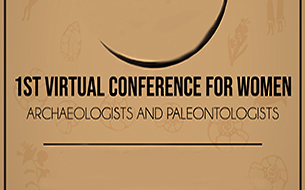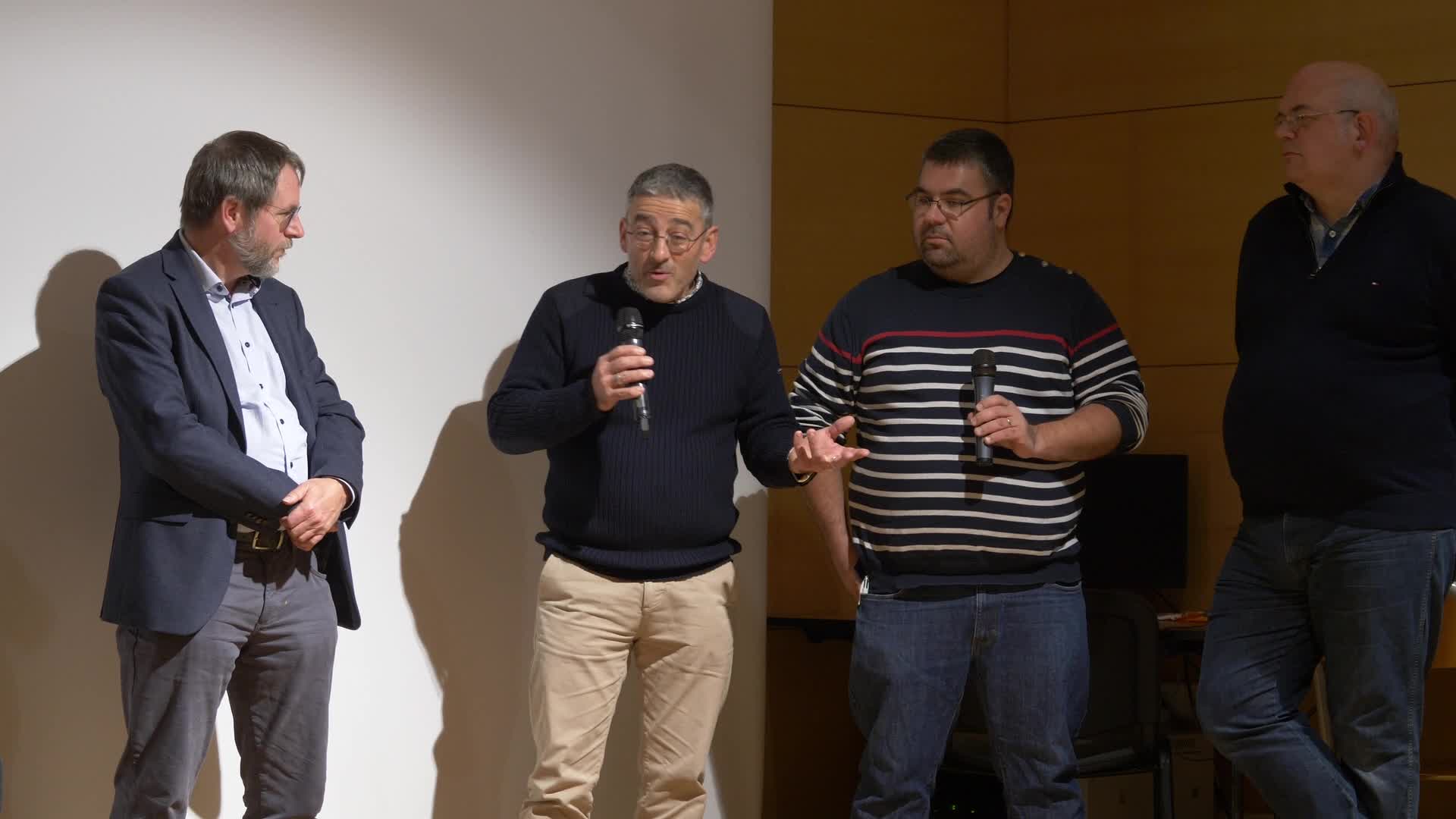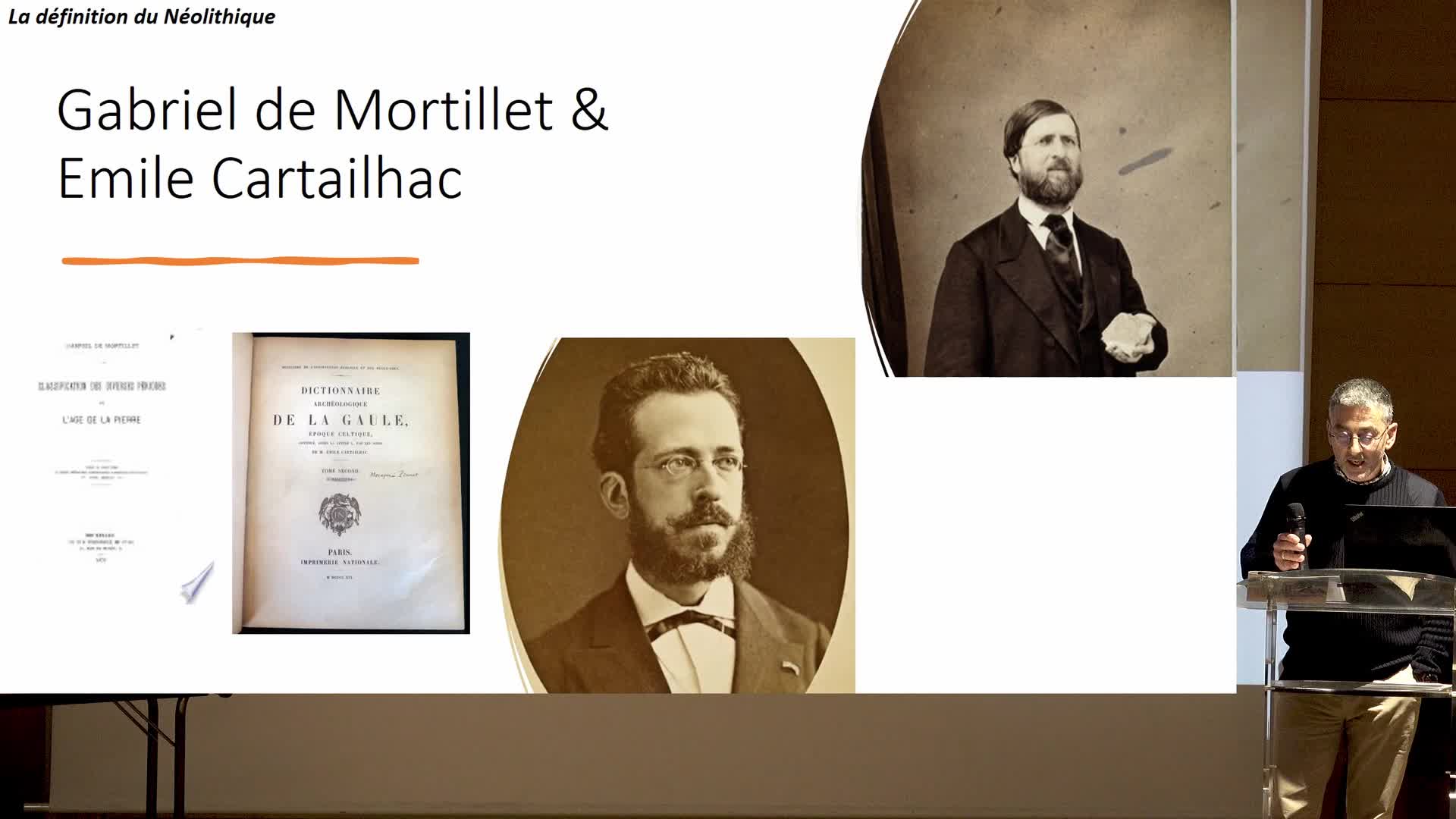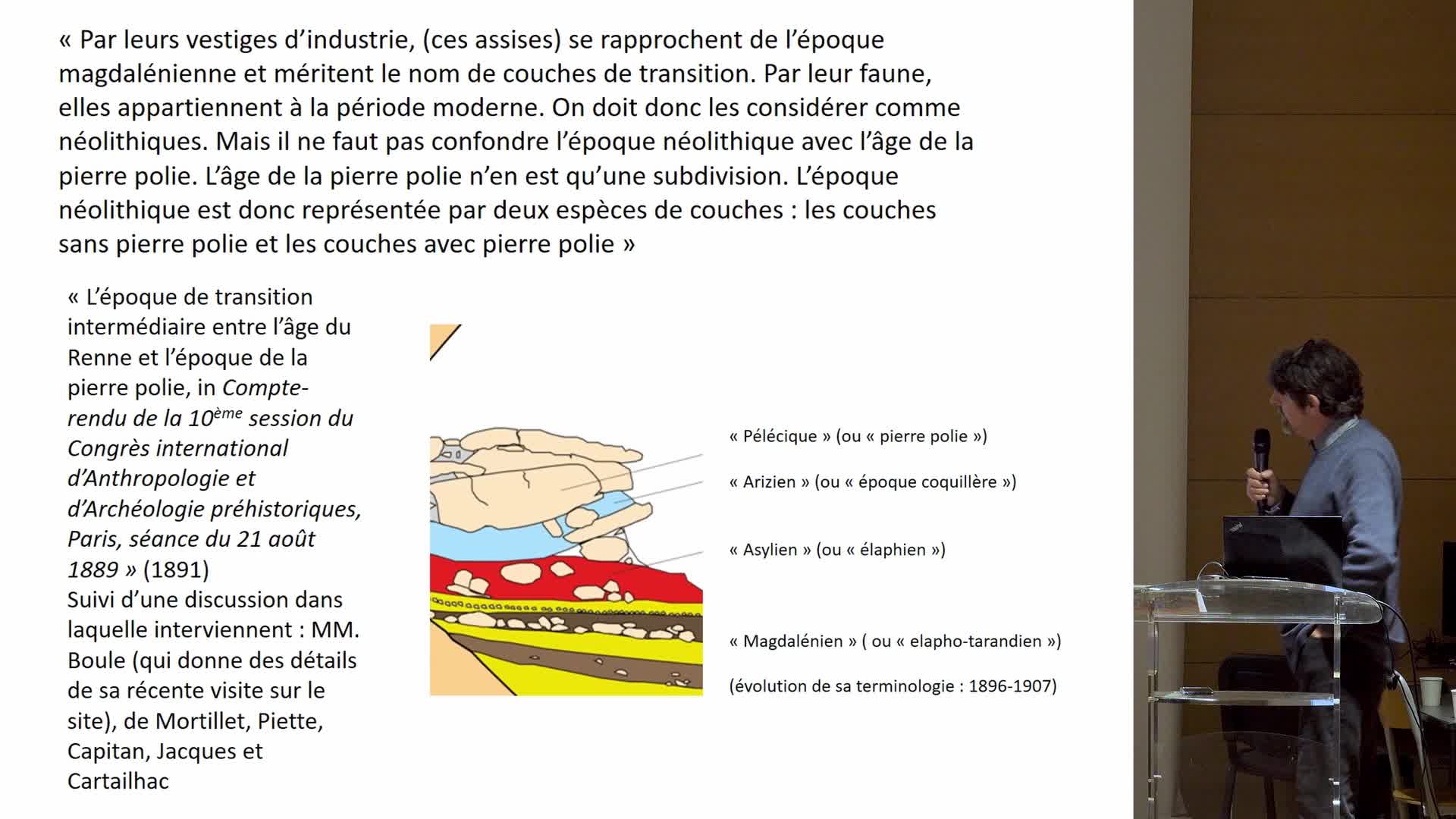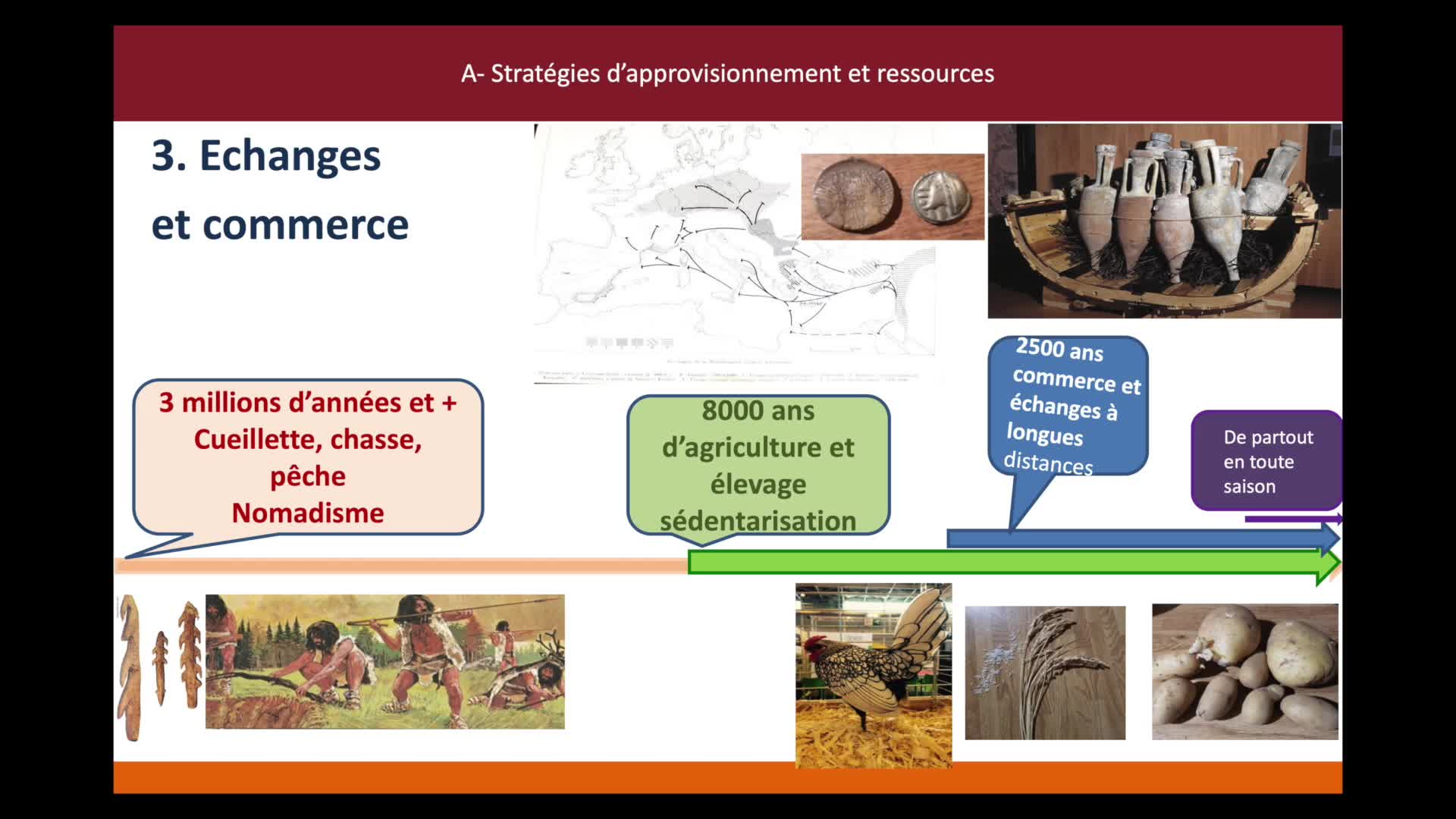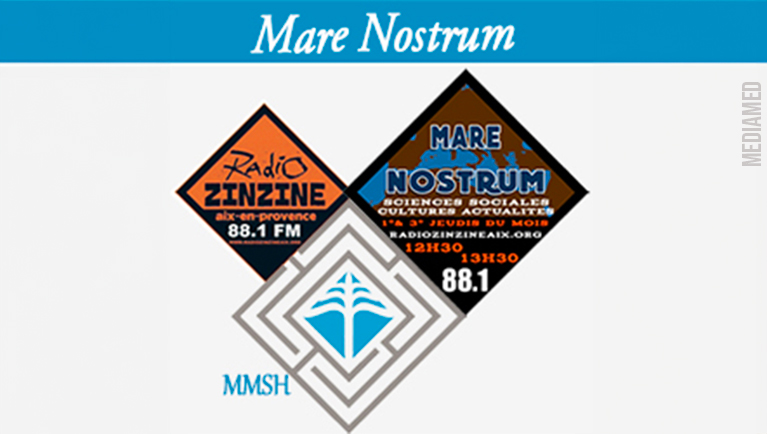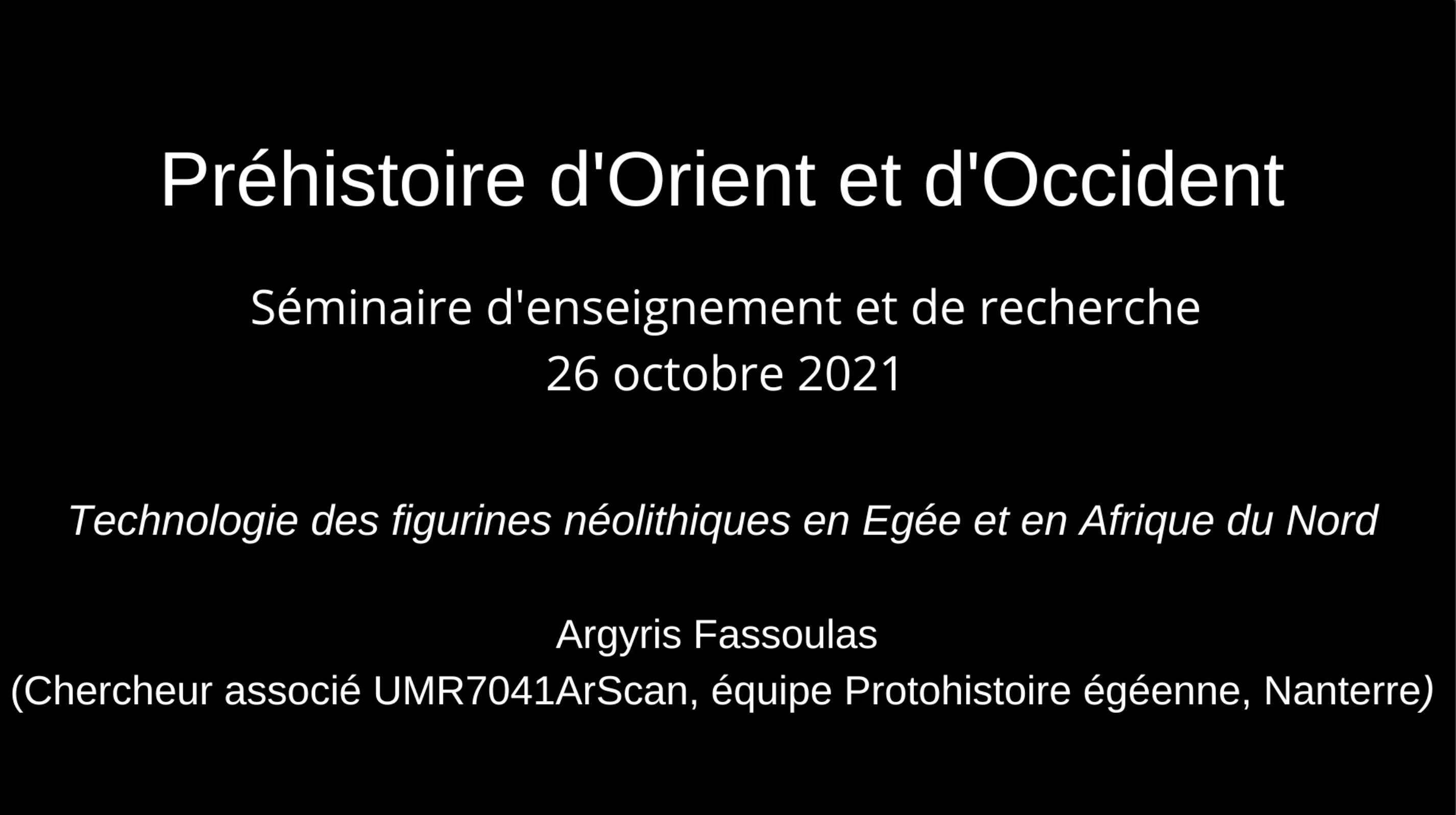Notice
From monoliths to megaliths: a new approach on the megalithic burials of southwestern France / Boscus Sarah
- document 1 document 2 document 3
- niveau 1 niveau 2 niveau 3
Descriptif
From monoliths to megaliths: a new approach on the megalithic burials of southwestern France / Boscus Sarah, in colloque "1st Virtual Conference for Women Archaeologists and Paleontologists. Nouveaux apports à l’étude des populations et environnements passés" organisé par le laboratoire Travaux et Recherches Archéologiques sur les Cultures, les Espaces et les Sociétés (TRACES) de l’Université Toulouse Jean Jaurès et le laboratoire Paléontologie Évolution Paléoécosystèmes (PALEVOPRIM) de l'Université de Poitiers, sous la responsabilité scientifique de Julie Bachellerie, Ana Belén Galán López (Traces), Émilie Berlioz et Margot Louail (Palevoprim). Université Toulouse Jean Jaurès, 8-9 mars 2021.
Session 2 : Occupation of territories and population mobility.
[Conférence enregistrée en distanciel].
A major paradigm shift took place at theNeolithic period: Human transformed Nature and shaped the landscape that surrounds him. The megalithic architectures which are the first stone constructions of Humanity, illustrate well their will to mark the landscape. The megalithic burials also testify a new relationship to death, and probably to ancestors, through the perennial, aerial and therefore visible nature ofthese structures. Studies on funerary megalithism have been very popular with antiquarians, prehistorians and first archaeologists since the 19th century. As a result, many of these graves were formerly excavated and even looted, leaving sparsely information on the deposits and sepulchral rites. Many research axes have been developed since, but very few on the question ofthe links between these monuments and the natural environment. However, these architectures are the result of choices made by builders, choices conditioned by society and the natural environment in which they lived. In southwestern France, which has the largest number of megalithic funerary architectures in Europe, such an approach has never been proposed. However, the areas of concentration of these monuments are all located on the same geological entity, the limestone plateau, called “causse”. I will therefore present here the systemic approach developed as part of my doctoral thesis, allowing us to take an interest in this Human-Environment interface.
Thème
Documentation
Références documentaires
GUILAINE, Jean, GOUÉZIN, Philippe, BOSCUS, Sarah, BALEUX, François Baleux et al. (2019). Dynamique architecturale du mégalithe, in Jean Guilaine (dir.), Le dolmen de Saint-Eugène. Autopsie d'une sépulture collective Néolithique, Toulouse, Éditions Archives d'Écologie Préhistorique, 101-115.
Liens
Programme du colloque "1st Virtual Conference for Women Archaeologists and Paleontologists" (8-9 mars 2021)
Website du Laboratoire Paléontologie Évolution Paléoécosystèmes Paléoprimatologie (PALEVOPRIM)
Livret des résumés des communications du colloque "1st Virtual Conference for Women Archaeologists and Paleontologists. Nouveaux apports à l’étude des populations et environnements passés" (8-9 mars 2021)
Site internet dédié au colloque "1st Virtual Conference for Women Archaeologists and Paleontologists" (8-9 mars 2021)
Dans la même collection
-
Sensivity analysis to morphological changes of the shoulder joint: application to percussio…
Blasi-ToccacceliAliciaSensivity analysis to morphological changes of the shoulder joint: application to percussion gestures during Oldowan debitage / Alicia Blasi-Toccacceli, in colloque "1st Virtual Conference for
-
"Ouranopithecus macedoniensis" (late Miocene, Greece): analysis of mandibular fragments using …
IoannidouMelaniaOuranopithecus macedoniensis (late Miocene, Greece): analysis of mandibular fragments using 3D geometric morphometrics / Melania Ioannidou, in colloque "1st Virtual Conference for Women
-
Comminution capabilities of extant and fossil anthropoids during molar intercuspation: a preliminar…
WalkerAxelle E. C.Comminution capabilities of extant and fossil anthropoids during molar intercuspation: a preliminary experiment using a chewing simulator / Axelle E. C. Walker, in colloque "1st Virtual Conference for
-
New sperm whale cranium from the late Miocene and a revised family attribution for the small crown …
AlfsenApollineNew sperm whale cranium from the late Miocene and a revised family attribution for the small crown physeteroid Thalassocetus / Apolline Alfsen, in colloque "1st Virtual Conference for Women
-
What is shaping the brain? A perspective on brain size evolution in carnivorans / Margot…
MichaudMargotWhat is shaping the brain? A perspective on brain size evolution in carnivorans / Margot Michaud, in colloque "1st Virtual Conference for Women Archaeologists and Paleontologists. Nouveaux
-
Postnatal shape changes in the rodent mandible at a macroevolutionary scale / Morgane Dubied
DubiedMorganePostnatal shape changes in the rodent mandible at a macroevolutionary scale / Morgane Dubied, in colloque "1st Virtual Conference for Women Archaeologists and Paleontologists. Nouveaux apports à l
-
Cranial vault healing in modern humans: input of archaeological and clinical data / Aliéno…
LepetitAliénorCranial vault healing in modern humans: input of archaeological and clinical data / Aliénor Lepetit, in colloque "1st Virtual Conference for Women Archaeologists and Paleontologists. Nouveaux
-
A transdisciplinary approach to reconstruct the Nilotic socio-ecosystem in Luxor west bank during t…
NicatoreGiuliaA transdisciplinary approach to reconstruct the Nilotic socio-ecosystem in Luxor west bank during the Ptolemaic period (3rd-1st centuries BC.) / Giulia Nicatore, in colloque "1st Virtual Conference
-
Tracing Human Ancestral Migration from its Symbiotic Bacteria / Alexia Nguyen Trung
Nguyen TrungAlexiaTracing Human Ancestral Migration from its Symbiotic Bacteria / Alexia Nguyen Trung, in colloque "1st Virtual Conference for Women Archaeologists and Paleontologists. Nouveaux apports à l’étude des
-
Foragers and their symbolic landscape. Understanding the role of rock art in the territoriality of …
JobardLéaForagers and their symbolic landscape. Understanding the role of rock art in the territoriality of Later Stone Age Matobo populations / Léa Jobard, in colloque "1st Virtual Conference for Women
-
Towards a tracking of past bird seasonal migrations through geological times: what could isotopes t…
DuhamelAnaïsTowards a tracking of past bird seasonal migrations through geological times: what could isotopes tell us? / Anaïs Duhamel, in colloque "1st Virtual Conference for Women Archaeologists and
-
Study of human group behaviors during the Last Glacial Maximum in the east Carpathian area from zoo…
DemayLaëtitiaStudy of human group behaviors during the Last Glacial Maximum in the east Carpathian area from zooarchaeological remains / Laëticia Demay, in colloque "1st Virtual Conference for Women Archaeologists
Sur le même thème
-
Glozel-Session 2 : Table ronde conclusive
AngevinRaphaëlBonFrançoisGilabertChristopheGernigonKarimZurbachJulienTable ronde conclusive de la session n°2 - Glozel et la Préhistoire : construction(s) intellectuelle(s) et institutionnelle(s) - du colloque Glozel dans l’histoire de l’archéologie française : sources
-
Consacrés et soupçonnés : sociabilités et expériences partagées des préhistoriens catholiques dans …
Defrance-JublotFannyQuelles stratégies les chercheurs préhistoriens catholiques mettent-ils en place dans les années 1920 pour conserver l'intégrité de leurs exigences scientifiques et religieuses ?
-
Genèse et apories de la Préhistoire récente au Proche-Orient
BreniquetCatherineCatherine Breniquet revient sur les enjeux de la naissance de la préhistoire récente du Proche-Orient.
-
Le « Mirage oriental » de Salomon Reinach et la question primordiale de l’origine de la civilisatio…
GernigonKarimDès la publication du premier fascicule relatant ses fouilles de Glozel avec Fradin (1925), Morlet fait référence à l'article « Le Mirage oriental » publié par Salomon Reinach en 1893 dans L
-
L’archéologie néolithique à la fin du XIXe et au début du XXe siècle : entre construction scientifi…
GilabertChristopheÀ la fin du XIXe et au début du XXe siècle, la question du Néolithique est encore fortement liée à une vision évolutionniste de l’apparition de la « civilisation » en Europe et sur le pourtour
-
Glozel ou le « trompe-l’œil » d’une nouvelle résolution du hiatus entre Paléolithique et Néolithique
BonFrançoisFrançois Bon s'intéresse à la manière dont s'est difficilement opérée la reconnaissance d'une période de transition entre le Paléolithique et le Néolithique...
-
Les grandes étapes de l’alimentation, du Paléolithique à l’époque gauloise
FlouestAnneAnne Flouest, géologue et docteure en paléoclimatologie, revient sur l’étonnante évolution des usages alimentaires du Paléolithique à l’époque gauloise.
-
Les massacres de masse dans le Néolithique centre-européen (5200 - 4000 BC). Un état de la question
JeunesseChristianDepuis la retentissante et inaugurale découverte du dépôt humain de Talheim, en 1983, les fouilles de structures renfermant des groupes d’individus décédés de mort violente se sont multipliées dans le
-
Building and belonging: architecture and memory in neolithic orkney
EdmondsMark R.Talk by Mark EDMONDS, (Archeologie, York), as part of the workshop "Memory, Place, and Material Culture", organized by John SUTTON, 2022-2023 research fellow at the Paris IAS, Emeritus Professor at
-
L’Alimentation des premiers agriculteurs-éleveurs au Néolithique
GoudeGwenaëlleL'invitée de cette émission est Gwenaëlle Goude anthropobiologiste et bioarchéologue, chargée de recherche CNRS au LAMPEA (Laboratoire méditerranéen de Préhistoire Europe et Afrique), laboratoire de
-
Technologie des figurines néolithiques en Egée et en Afrique du Nord
FassoulasArgyrisIntervention (podcast) de Argyris Fassoulas (Chercheur associé UMR 7041 ArScan, équipe Protohistoire égéenne, Nanterre) dans le cadre des séminaires du cycle " Sciences pour l’Archéologie :
-
Historiographie du Néolithique. 1 / Jean Guilaine
GuilaineJeanCe séminaire relate la mutation de la recherche préhistorique au cours des quatre dernières décennies, et plus précisément l’histoire de la recherche néolithique française qui est celle d’une


